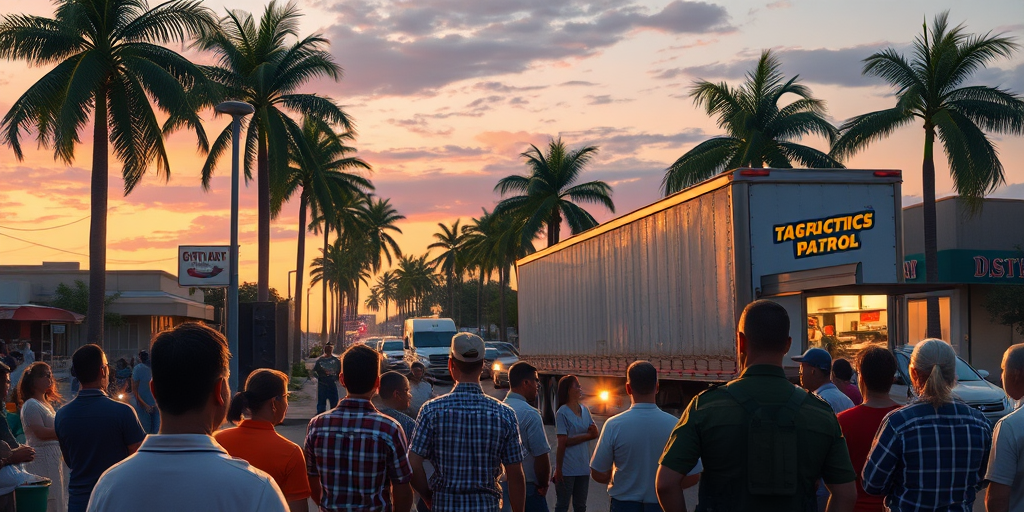Border Patrol Seizes $496K Worth of Cocaine Hidden Inside Tractor in Los Indios
In a significant crackdown on narcotics smuggling, U.S. Border Patrol agents recently intercepted a smuggling operation near Los Indios, seizing 15.5 pounds of cocaine with an estimated street value of $496,000. This successful operation, facilitated by a K-9 unit under Operation Stonegarden, underscores the formidable challenges and intricate operations involved in border security in the Rio Grande Valley (RGV).
The Successful Interception
The operation unfolded around 8:20 p.m. on June 13, when agents conducted a traffic stop on a John Deere tractor pulling a grain buggy. Responding to a K-9 alert from the Harlingen Police Department, agents searched the vehicle and discovered six small packages suspected to contain cocaine. The tractor operator was promptly arrested, and the tractor seized.
In a press statement, a Border Patrol spokesperson emphasized the importance of inter-agency collaboration, “Operations like these highlight the crucial partnerships between our agencies. The successful seizure of such a significant amount of narcotics is a testament to the dedicated efforts of our agents and partners.”
Local Impact and Community Reactions
For Valley residents, incidents like these are a stark reminder of the region’s persistent battle against drug trafficking. The RGV, given its proximity to the border, is often a focal point for such activities, impacting community safety and straining local law enforcement resources.
A local resident, Javier Hernandez, expressed his concerns, “We are proud of the efforts of the Border Patrol in keeping our community safe, but it’s a constant worry knowing these activities happen around us.”
Such operations also have economic implications. Drug trafficking not only endangers lives but can also deter investment and tourism in South Texas communities, making successful interventions all the more crucial.
Context and Past Events
This recent interception is part of ongoing efforts under Operation Stonegarden, which provides funding for enhanced cooperation between local, tribal, territorial, state, and federal law enforcement agencies to improve border security.
Historically, the RGV has been a hotspot for smuggling activities due to its strategic location. The constant vigilance and collaborative operations by law enforcement have resulted in numerous seizures over the years, yet the persistent nature of these activities points to the need for continued and evolving strategies.
Balancing Perspectives and Challenges
While such law enforcement actions are applauded for ensuring community safety, they also spark discussions on broader issues, such as the socio-economic factors fueling illegal drug trade and the adequacy of existing border policies.
Mary Garcia, a professor of criminal justice at South Texas College, provides insight into these complexities. “Stopping narcotics smuggling is not just about interception and arrests. It involves examining the root causes, such as poverty and lack of opportunities, that drive individuals toward these activities.”
Critics of current border strategies argue for comprehensive reforms, including addressing immigration policies that inadvertently impact local businesses and communities. In McAllen, for instance, the economic impact of stringent immigration enforcement has been palpable, affecting local commerce and labor markets.
Future Implications and the Path Ahead
Looking ahead, the RGV and its community leaders continue to grapple with the need for robust border security policies that safeguard citizens while ensuring economic and social stability. The defunding of Texas’s state border wall program indicates a shift in strategy, perhaps signifying a focus on technological enhancements and inter-agency partnerships like Operation Stonegarden.
This incident also emphasizes the need for ongoing dialogues between policymakers, law enforcement, and the community to engineer sustainable solutions. Community forums and discussions are essential in shaping policies that reflect local needs while addressing broader security challenges.
Engaging the Community and Moving Forward
Community engagement remains pivotal. Residents and local businesses are encouraged to participate in upcoming public forums organized by local authorities to share their perspectives and influence policy-making processes effectively.
For residents seeking real-time updates and information, resources such as the KRGV FIRST WARN 5 Weather app provide vital community alerts, including safety advisories and emergencies.
In conclusion, the RGV’s battle against drug smuggling exemplifies the complexities of border security and the fundamental role of community collaboration. As the region navigates these challenges, the resilience and proactive initiatives of Valley residents and law enforcement continue to forge a path toward a safer, more prosperous community.







